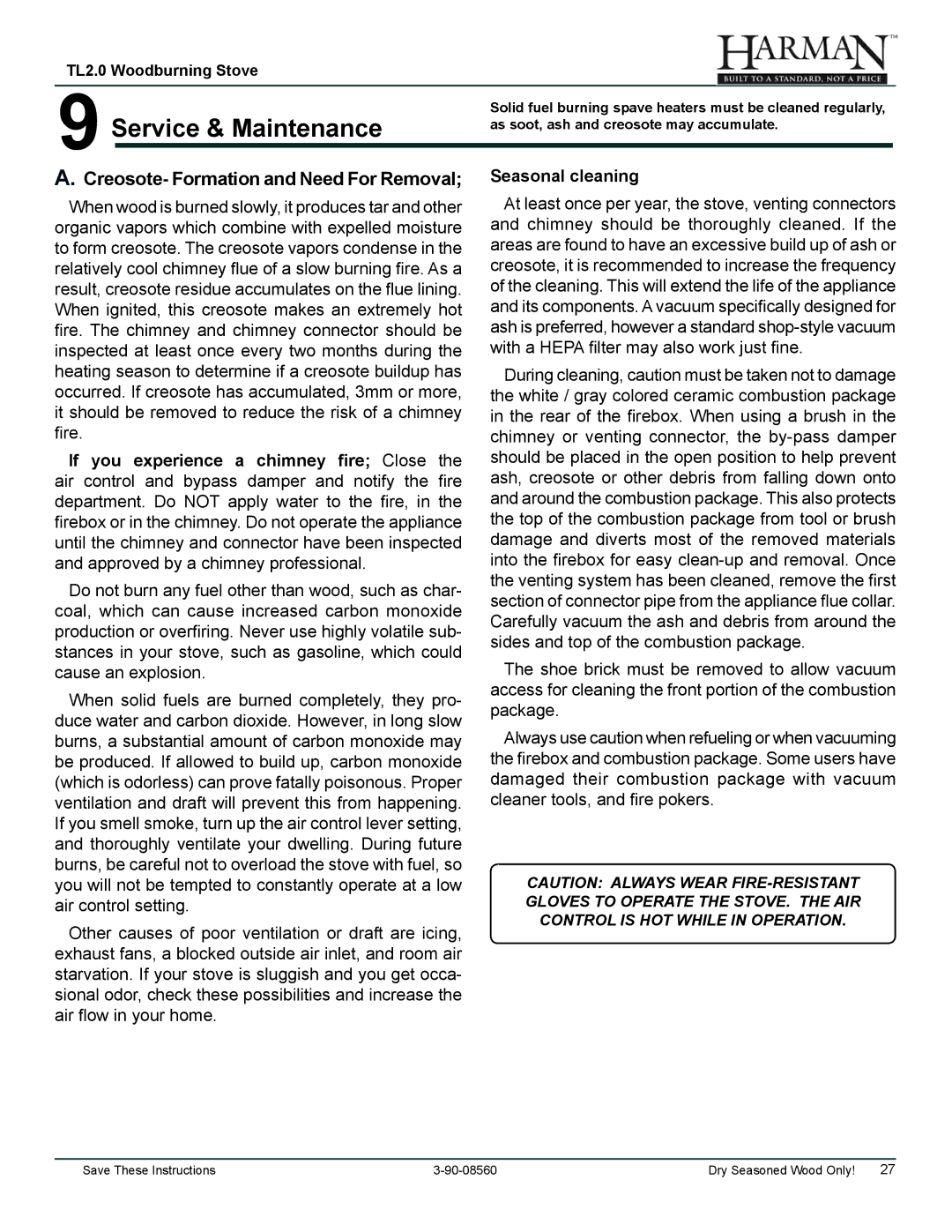TL2.0 specifications
The Harman Stove Company TL2.0 represents an evolution in heating technology, combining efficiency, design, and functionality for homeowners seeking reliable home heating solutions. This innovative stove is designed for those who prioritize both comfort and aesthetics, providing an excellent balance of performance and visual appeal.One of the standout features of the Harman TL2.0 is its impressive heating capacity. With a heat output that can efficiently warm spaces up to 2,200 square feet, it is perfect for medium to large areas. This capability is paired with a sleek design that allows the stove to seamlessly integrate into various home interiors, making it a stylish addition as much as a functional one.
Incorporating advanced combustion technology, the TL2.0 is engineered to maximize efficiency while minimizing emissions. The stove utilizes a patented "intelligent control board" that enhances burn efficiency by optimizing air-to-fuel ratios in real-time. This not only helps in achieving a cleaner burn but also lowers fuel consumption, making it an eco-friendly choice for consumers.
The TL2.0 is constructed with high-quality materials, ensuring durability and longevity. The robust steel construction not only contributes to its sturdiness but also allows for efficient heat retention and distribution. Additionally, the ceramic glass door provides an elegant view of the flames, creating a warm ambiance in any room.
Another notable characteristic is Harman's commitment to user-friendly operation. The TL2.0 features a straightforward control panel that makes it easy for users to adjust settings and monitor performance. With programmable thermostats and remote control options, homeowners can manage their heating preferences effortlessly.
Safety is also a top priority for Harman, and the TL2.0 includes several built-in safety features such as an automatic shut-off system and a cool-to-the-touch exterior. These features provide peace of mind, especially in homes with children or pets.
Overall, the Harman Stove Company TL2.0 combines advanced technology, sleek design, and safety features that make it a top choice for anyone in the market for a reliable heating solution. It stands out as a model that not only meets but exceeds modern expectations for home heating. Whether for practicality or aesthetics, the TL2.0 is poised to keep homes warm and inviting for years to come.

